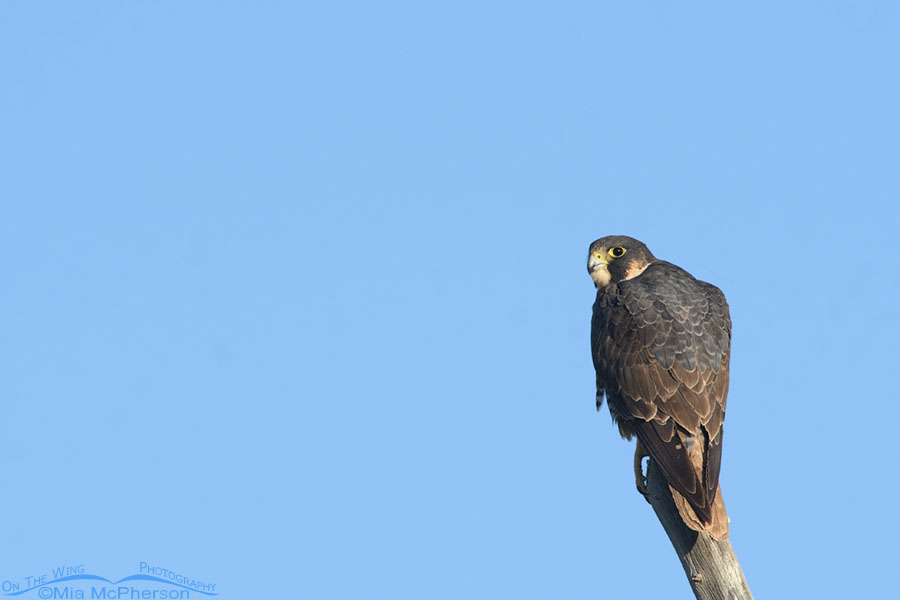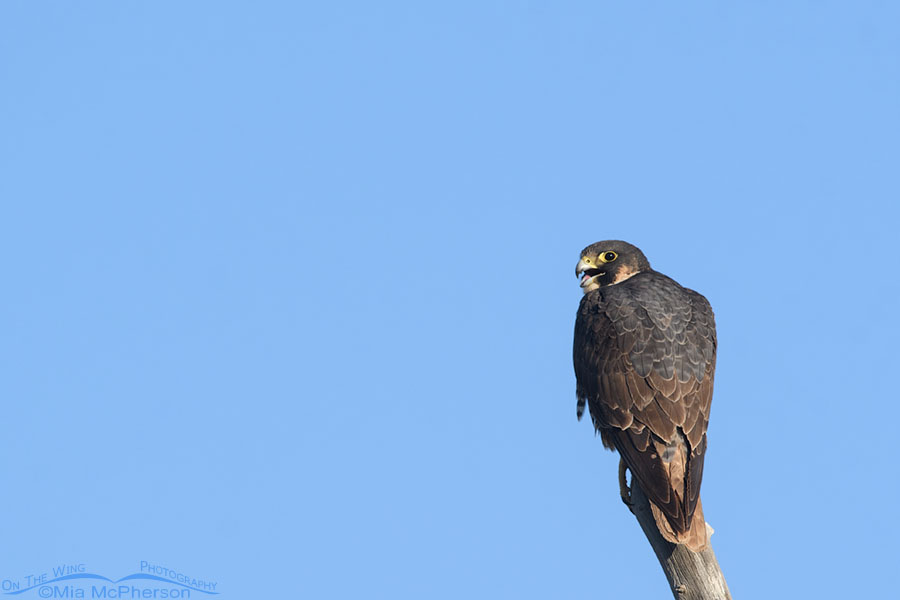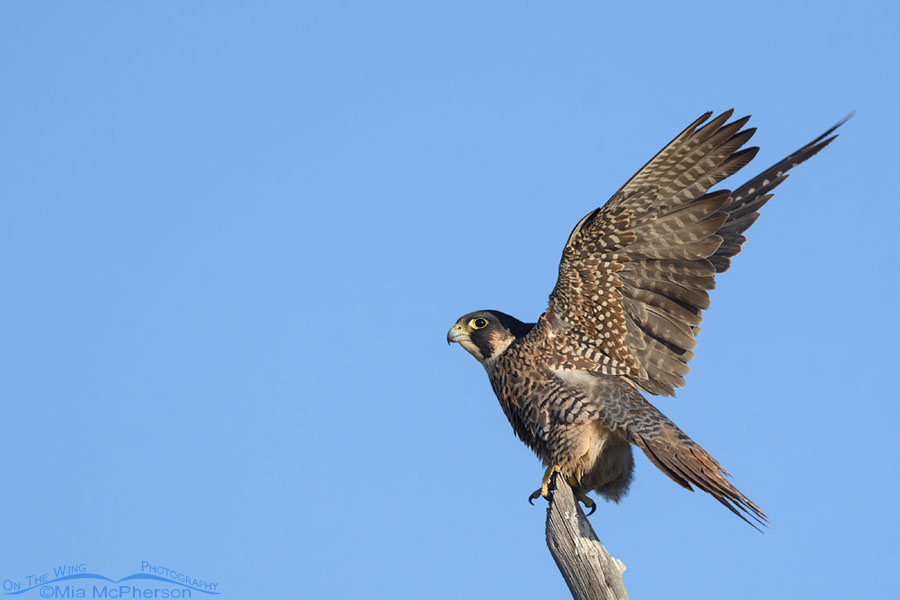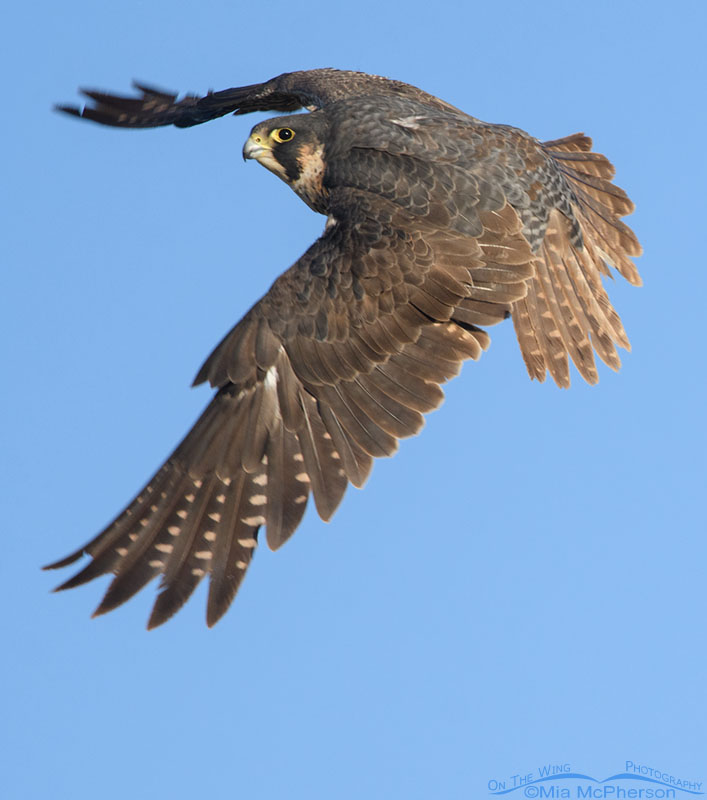 Subadult Peregrine Falcon in the West Desert – Nikon D500, f7.1, 1/800, ISO 500, +1.0 EV, Nikkor 500mm VR with 1.4x TC, natural light
Subadult Peregrine Falcon in the West Desert – Nikon D500, f7.1, 1/800, ISO 500, +1.0 EV, Nikkor 500mm VR with 1.4x TC, natural light
Last week before I found the Rock Wren I wrote about I also found a subadult Peregrine Falcon perched on a wooden post in the West Desert. The falcon was located about halfway up some foothills. I’ve seen Peregrine Falcons in the area before so finding this bird wasn’t a complete surprise but I was grateful to see it.
 Subadult Peregrine Falcon calling from a wooden perch – Nikon D500, f7.1, 1/640, ISO 500, +1.0 EV, Nikkor 500mm VR with 1.4x TC, natural light
Subadult Peregrine Falcon calling from a wooden perch – Nikon D500, f7.1, 1/640, ISO 500, +1.0 EV, Nikkor 500mm VR with 1.4x TC, natural light
The falcon spent quite a bit of time calling from the old wooden post. That puzzled me at first then I saw an adult Cooper’s hawk that had been hidden from my view up the slope lift off and fly away. The Peregrine may have been calling because of the Cooper’s Hawk’s presence. It continued to call after the accipiter left though so I can’t be sure.
I took way too many photos of the Peregrine Falcon perched on the wooden post.
 Subadult Peregrine Falcon lifting off from a fence post – Nikon D500, f6.3, 1/1250, ISO 800, +1.0 EV, Nikkor 500mm VR with 1.4x TC, natural light
Subadult Peregrine Falcon lifting off from a fence post – Nikon D500, f6.3, 1/1250, ISO 800, +1.0 EV, Nikkor 500mm VR with 1.4x TC, natural light
I was able to get this one photo when the subadult Peregrine Falcon finally started to lift off with a great view of its eyes and the underside of its wings.
 Subadult Peregrine Falcon in flight – Nikon D500, f6.3, 1/1250, ISO 800, +1.0 EV, Nikkor 500mm VR with 1.4x TC, natural light
Subadult Peregrine Falcon in flight – Nikon D500, f6.3, 1/1250, ISO 800, +1.0 EV, Nikkor 500mm VR with 1.4x TC, natural light
Then I clipped quite a few shots of it in flight. This one photo of the falcon in flight showed the head sharply in focus but the bird was extremely close to the left side of the frame so I cropped it vertically to compensate for that.
The reason I wanted to share this particular photo is that it shows that this falcon is molting into adult plumage. The grayish feathers seen on the falcon’s back, mantle, coverts, rump, and tail are adult plumage and the brown colored feathers are what is left of this bird’s juvenal plumage. It isn’t often I find a Peregrine Falcon at this age or plumage phase so this bird was a treat.
Life is good.
Mia
Click here to see more of my Peregrine Falcon photos plus facts and information about this species.


All of these shots are wonderful! Saw an adult skim over our fence line a few weeks ago — what a joy!
Extraordinary series. The head shot of the falcon in flight is truly magnificent. Thanks Mia.
An excellent set, Mia! Thanks for sharing.
Amazing to see – and to capture. Thank you.
Very nice! Glad to know there are younger birds making it out there.
Like you, Sue Johnson, I wondered too if the teenaged Peregrine Falcon was calling for food. That last shot is awesome.
Wow, Mia. These are fabulous! And the last one…!!!!
Could this bird have been calling for food? A teenage habit that’s hard to give up.